A Harrowing Trip to Auschwitz
Disclaimer: Some links on this page may be affiliate links. If you purchase anything through them, I will receive a small commission at no extra cost to you! Further details in the Privacy Policy.
Visiting Poland for the First Time
Visiting Poland had been a goal of mine for many years. As a history lover and someone with an interest in visiting locations with a dark past, there was one place which interested me more than most others in Europe. Auschwitz. As a result I was very keen on visiting Poland for the first time when the opportunity arose.
I was in Slovakia just before Easter, and the Easter accommodation costs forced me to leave earlier than I had wished. Bratislava was a nice city which had been a pleasant and unexpected surprise. Once you’ve seen ten European cities, you’ve pretty much seen them all. Yet Bratislava had a certain charm to it.
After just two days in the country however, the accommodation costs soared, leaving just the horrific hostel in which I’d somehow endured the past two days as the only cheapish option.
Reluctantly, I cut my time in Slovakia very short and headed north of the border to the chilly yet beautiful city of Krakow.
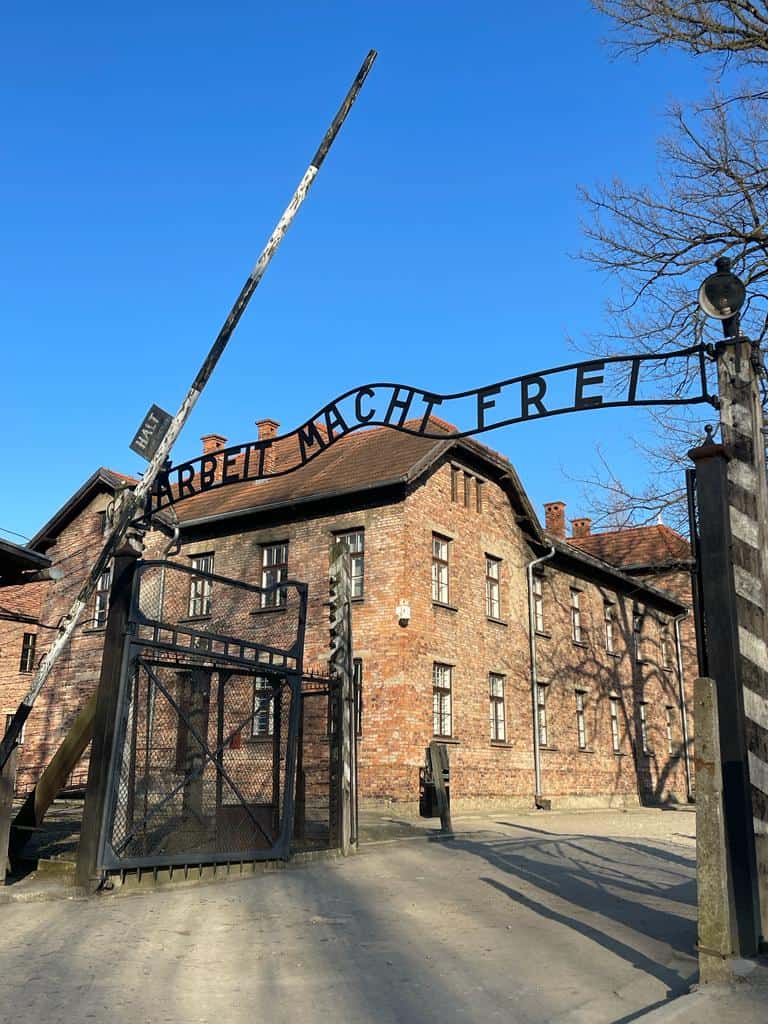
Poland Travel Requirements
Poland is very easy to visit. As a Schengen country you will have no issues entering from the majority of its neighbours. You won’t even need to show a passport or stop at the border.
Things do of course become a little trickier when entering from the eastern side, with only Lithuania providing easy access. Belarus has been restricting access since the onset of the Ukraine war.
As a UK passport holder, there was no need for a visa. The same applies to the majority of western countries. Of course, visa requirements vary, therefore you should always check before going to Poland (or any other country).
Is it safe to visit Poland because of Ukraine and the ongoing crisis there?
Yes.
Whilst there have been tensions at the Belarus border, there has only been one issue within Poland related to the war. That was a Ukrainian missile which misfired and landed in Poland killing two.
As long as you aren’t hanging around in remote border villages then you won’t have any issues linked to the war. Even then, the chances are minimal.
Running out of Steam
I would be visiting Poland as my 15th and final stop during a three-month trip covering Greece, the Balkans and a good chunk of Central Europe.
But in all honesty I was getting bored. Greece was my 47th country and Poland my 61st. After visiting places as wonderful as Indonesia, Bolivia and Nicaragua amongst others, it is harder to get motivated for European city trips.
Throw in the fact that I’d ignored the bleak winter weather whilst arranging a trip lasting from January until April. This made it a struggle to maintain the enthusiasm I usually have for long term travel.
Then there’s the fact that many European countries feel like clones of each other. The cities start to feel and look the same. It becomes harder to find things you feel genuine excitement for.
After a while you lose interest in yet another gothic cathedral, Orthodox Church or WWII-related museum or memorial.
Of course there are differences, but they don’t feel significant. In fact, I’ll say this VERY quietly given the political hostilities between them, but the Balkans feel like no more than two or three different countries. Not eleven!
I also had a new job to prepare paperwork for, meaning I would have to head back to the UK sooner rather than later. As a result I scrapped plans to continue through Belarus, the Czech Republic and Austria, whilst also cutting short my time in Poland.
Visiting Poland During Easter
Much of the city shut down for Easter weekend. However two places in particular were thriving. One was the market in Rynek Glowny, the main square of Krakow. The other being the many churches which were full of life in this country where over 70% of the population are Christians.
I went to church for a while and sat at the back just observing the hymns and speeches taking place. Although as someone who doesn’t speak Polish, I had no idea what was being said.
The market was the ideal place for a spot of lunch, and I had a delightful slab of pork. Shame about the $12 price tag really. A little excessive for what it was. Tasty though so I can’t complain too much.

Taking it Easy
The next few days were a struggle due to a lack of motivation. This is normal during long term travel. You will have occasional moments where you do find it hard to want to do a lot of things.
This can be true for many reasons. For example your mind is focused on something else. Or you simply don’t have much desire to see the place you are in.
Whilst Krakow was wonderful, I was perhaps in the right place at the wrong time. It deserves more of a chance than I gave it. But for several days I would just walk aimlessly around, without any desire to see much.
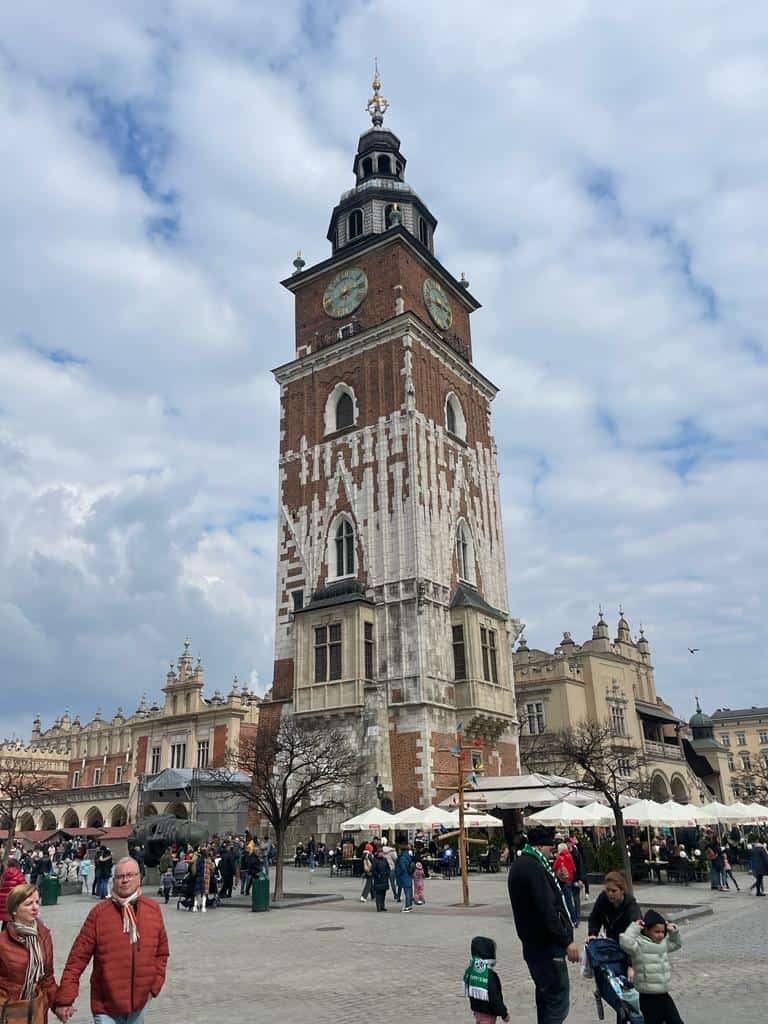
The Legend of the Wawel Dragon
After a few down days I started to explore a little more of Krakow.
One thing you’ll certainly see in Poland’s second city is the horse and carriage. This traditional method of transport has been repurposed to cater for tourists. Many will run through the major streets and squares of the city.
Also of interest is the tale of the Wawel Dragon. This famous Polish legend depicts a dragon who terrified locals and created havoc across Krakow. King Krakus promised his daughter’s hand in marriage to whoever could slay the dragon.
Many brave men tried to tame the beast, yet failed. Until one day a poor cobbler named Skuba took a sheep’s skin filled with sulphur to leave as bait for the dragon.
The dragon ate it, became consumed with thirst, and drank from the Vistula River until it exploded.
The king kept his word and Skuba married Princess Wanda of Krakow.
And they lived happily ever after.
I presume.
Anyway, what relevance does this story have to modern day Krakow?
The answer to that is the statue of the Wawel Dragon (Smok Wawelski) which stands lies at the base of Wawel Hill. The dragon breathes fire every five minutes or so which makes it an impressive sight. In fact, it would once breathe fire when triggered by text messages instructing it to do so. The Wikipedia page for the statue claims it used to receive 2,500 texts per day. Although I wasn’t able to verify this.
Whilst this alone isn’t a reason to come all the way to Krakow, it’s a fun little quirk that’s definitely worth checking out if you’re already in the city.
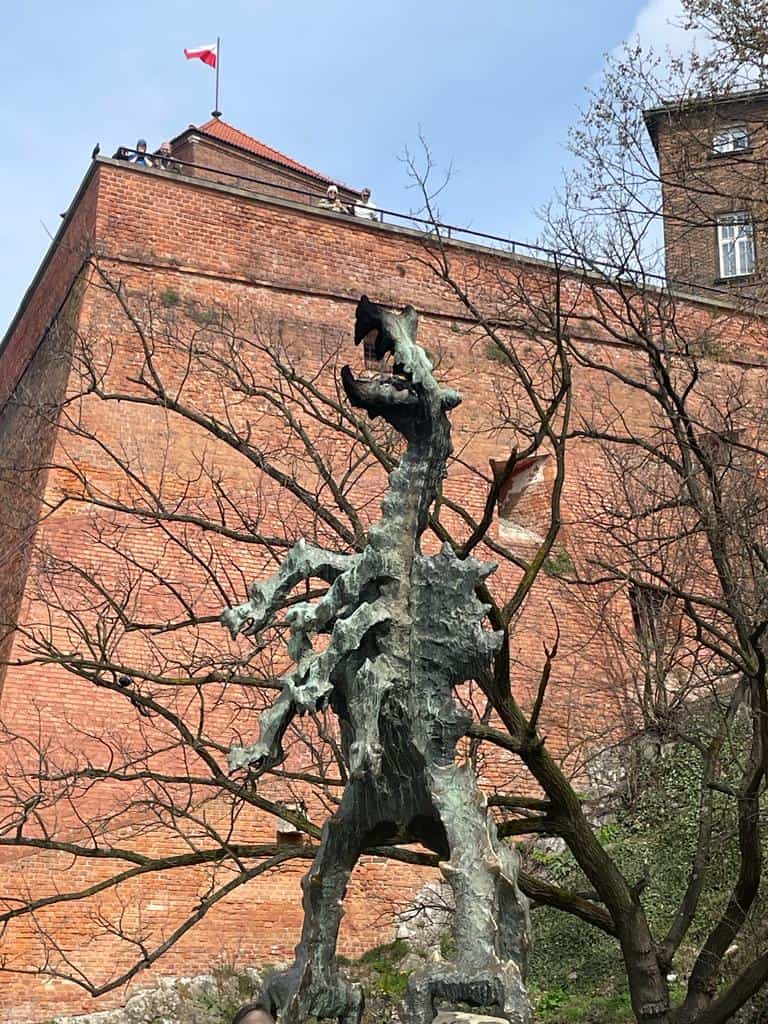
Visiting Poland to see Europe’s Darkest Place: Auschwitz
On my final day in Poland it was time to see the worst place in European history. Only Cambodia’s Tuol Sleng Genocide Museum and Killing Fields are remotely comparable to here. From places I have visited at least.
A scene of pure horror showcasing the lowest points of humanity.
I am of course talking about Auschwitz. A place where over a million (mostly Jews) were murdered. The concentration camp has mostly been preserved, bar a few gas chambers which the Nazis destroyed as the Soviets came to liberate the camp.
Today Auschwitz serves a new purpose, as a museum designed to educate on the horrors of the past. It is free to enter Auschwitz, although there is a cost associated with using a guide. You need to book a reservation to visit regardless. Tours in English sell out days, sometimes weeks, in advance.
If you wish to understand more about the history of Auschwitz, then I would recommend this article which explains what happened.
As a result, I visited without a tour. Alongside Auschwitz, you can visit nearby Birkenau, accessible by a free shuttle bus from outside the main camp. My trip started with a visit to Birkenau.
Inside Birkenau Concentration Camp
Enter Birkenau through the notorious gates with a large train track which led a million people to their deaths.
Ropey wooden carriages remain. These were used to transport victims to their final destination.
Perhaps most hauntingly of all was a small gate to the left, a few minutes on from the main entrance. Prisoners would be sent through this gate and walk for a further minute before reaching the many gas chambers where their lives would end.
It felt incredibly eerie to be walking down this path knowing what had happened 80 years previously, the gravel crunching under my feet with every step taken.
Then came a right turn towards what I would’ve thought were humble farmhouses if I didn’t know better. Buildings that gave no clues as to the horrors which took place around them.
A couple of minutes later, and you will find rubble. This is what was left of attempts to destroy the camp during the aforementioned Soviet Liberation.
Just behind the rubble are memorials. A wreath lay beside one with the words “never again” written in dark bold letters.
Turn back towards the entrance and you will see more of the same. The train tracks, the carriages, the paths where thousands took their final journeys. The watchtowers designed to prevent escape.
A truly awful place.
After Birkenau, it was time to visit the main camp. A short shuttle ride later and I was back at Auschwitz.

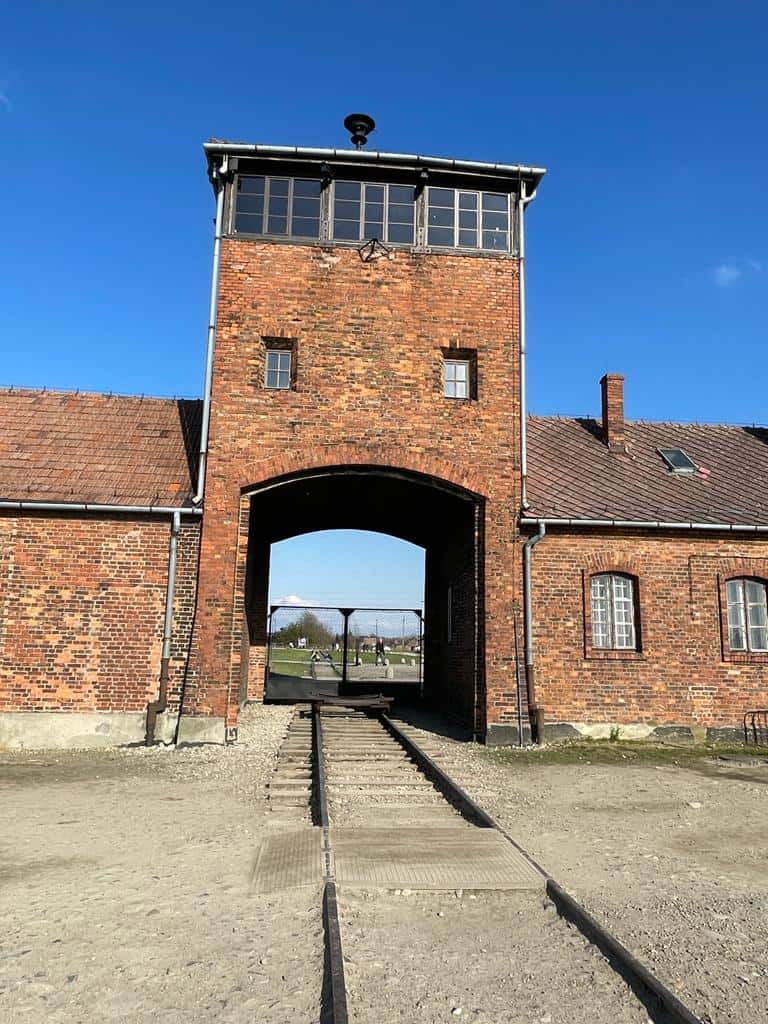
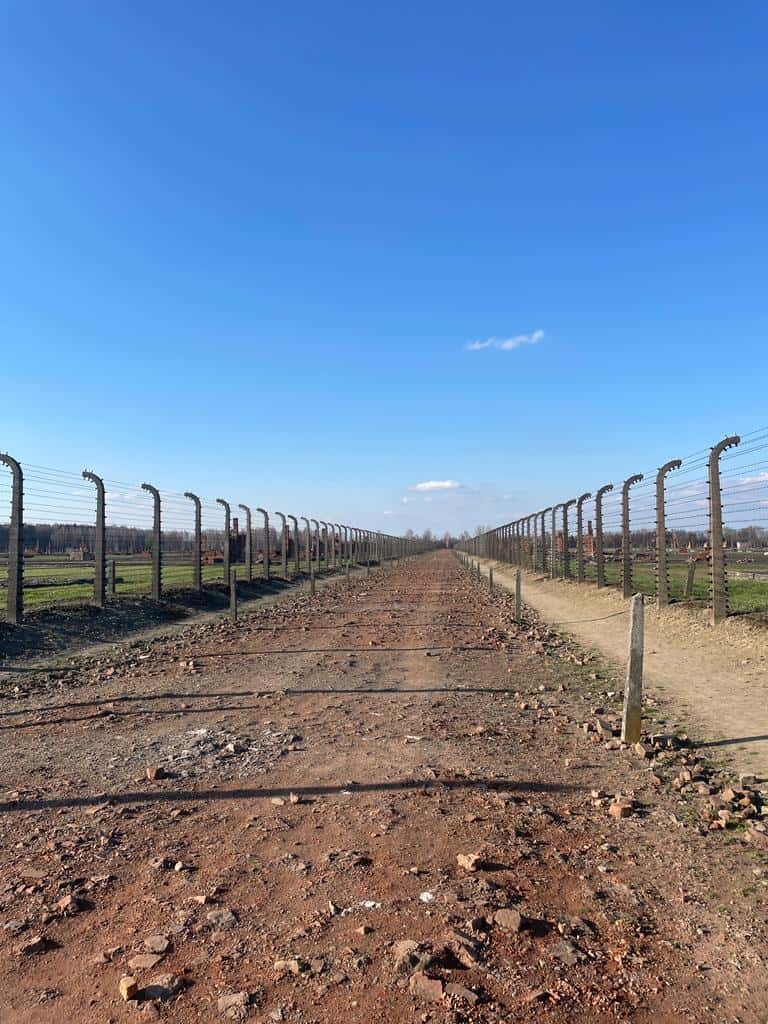
Arbeit Macht Frei
After entering the camp, I turned to the right and there it was.
The infamous gate with the words Arbeit Macht Frei at the top, or “work sets you free”.
The sign was created by prisoner Jan Liwacz, a metal worker who was forced to make the sign by camp commandant Rudolf Höss. It was said to mean that sacrificing yourself through hard labour brings a feeling of satisfaction. Although many, accurately as it turned out, interpreted it to mean you will become free through death.
Many barracks where prisoners were held remain within the camp. Dotted alongside them are various offices where the Nazis would be based.
Chilling watchtowers stand hauntingly behind rows of barbed wire.
The existence of “hell” in the spiritual sense is up for debate. But if one place on earth can be described as hell, this is it.
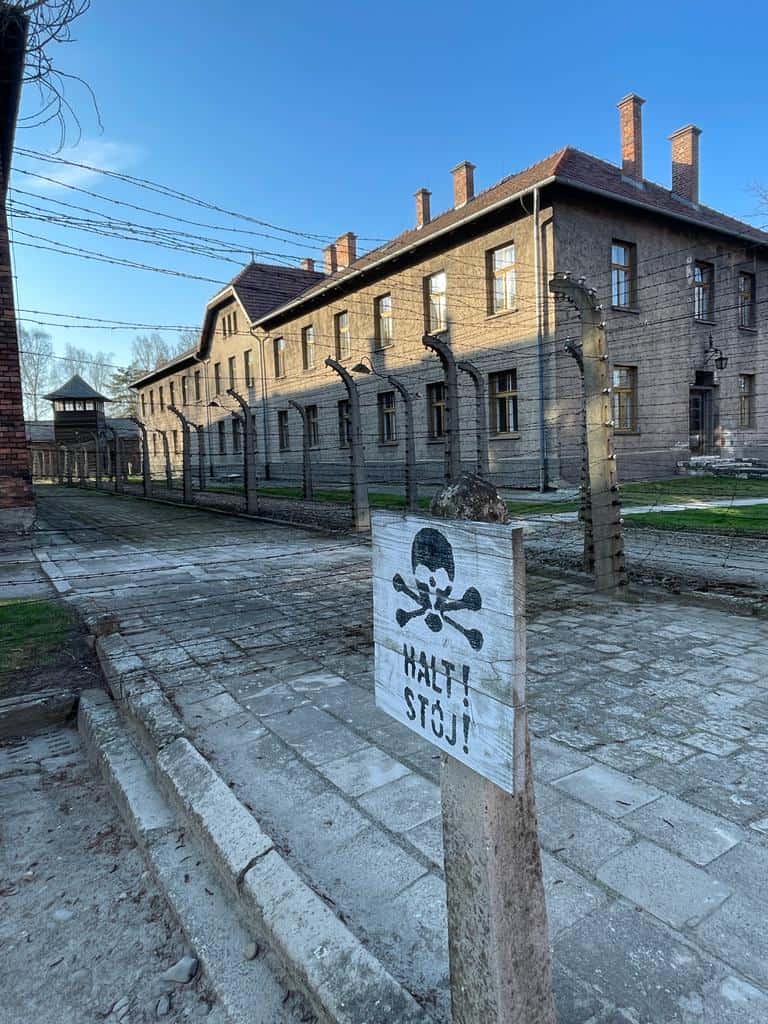


The Murder Factory
Walk left after heading through the gate and you will soon come across the gallows. It is one of the few structures in Auschwitz that represents a tiny slither of good news. Why? Because this was the scene of Poland’s last ever public hanging…
Who was the “victim”?
Rudolf Höss.
The man responsible for millions of deaths received a taste of his own medicine in the very place where he carried out his acts of evil.
Speaking of which, one of the camp’s most notorious buildings stands beside the gallows.
The gas chamber.
Unlike many in Birkenau, this one is still intact.
Walk downstairs and you will enter a gloomy concrete dungeon, devoid of natural lighting. Throw in the cool breeze, and this place is every bit as chilling as its horrifying past.
Turn the corner and you reach the crematorium. A series of ovens used to burn the bodies for three years up until 1943. This gas chamber was discontinued as Birkenau was built. Birkenau was a purpose-built gas chamber whereas this particular dungeon at Auschwitz was initially a munitions bunker.
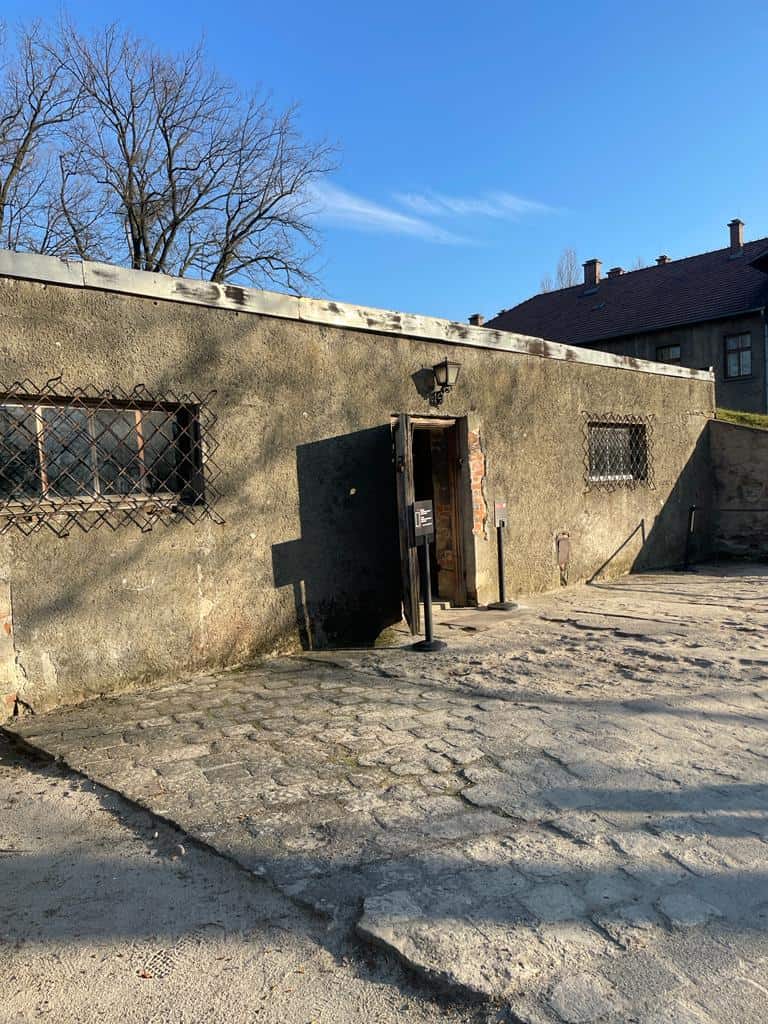
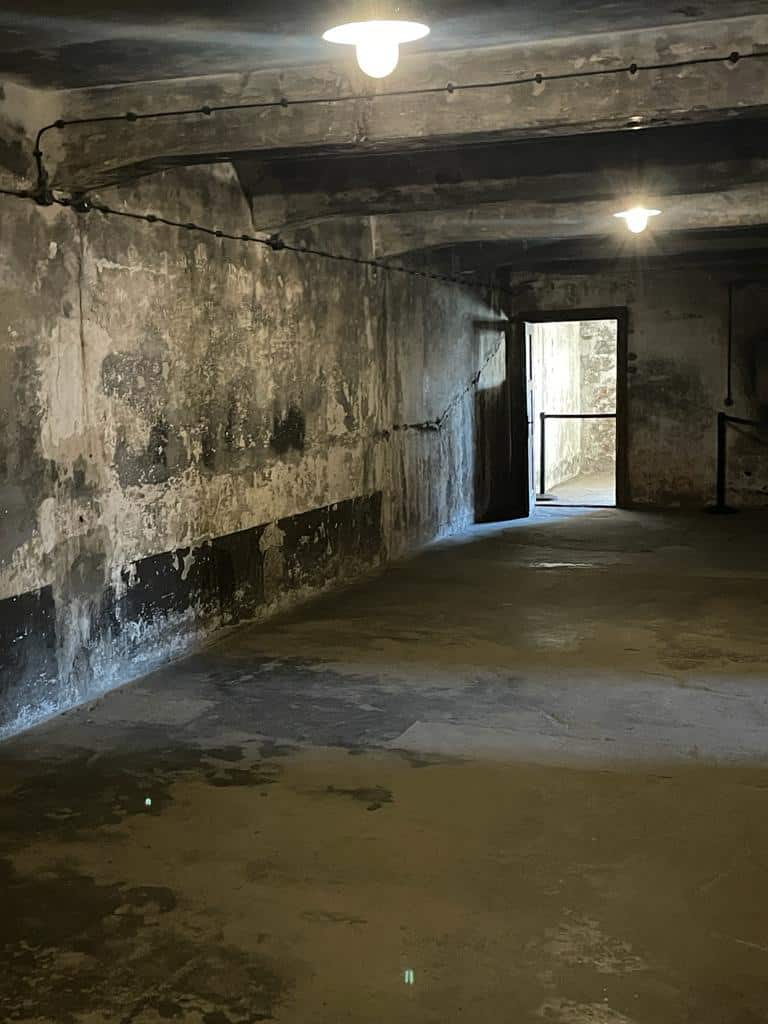

Haunting Images
Stepping away from the killing spots won’t take you away from the misery. Walk through the barracks and many have been converted into museum-style displays with graphic stories and images of what took place here. I won’t be sharing the worst of them, which included photographs of hanging victims, swinging lifeless from the gallows. Necks contorted, mouths displaying expressions of horror, eyes closed in resignation…
Some of the less extreme images included those of prisoners’ mugshots, eyes wide open in a state of pure fear. Grotty prison uniforms were displayed in front of many mugshots. Stories of the history adorned every wall.
Outside the horrors continue. A row of gallows remain intact, again used to murder enemies of the Nazis. I never even made it to Block 10, the scene of evil Dr. Mengele’s medical experiments.
I’ll make no secret of the fact that Auschwitz is a miserable place to visit. Fascinating and historically important. But it will leave you feeling sombre for a while afterwards.
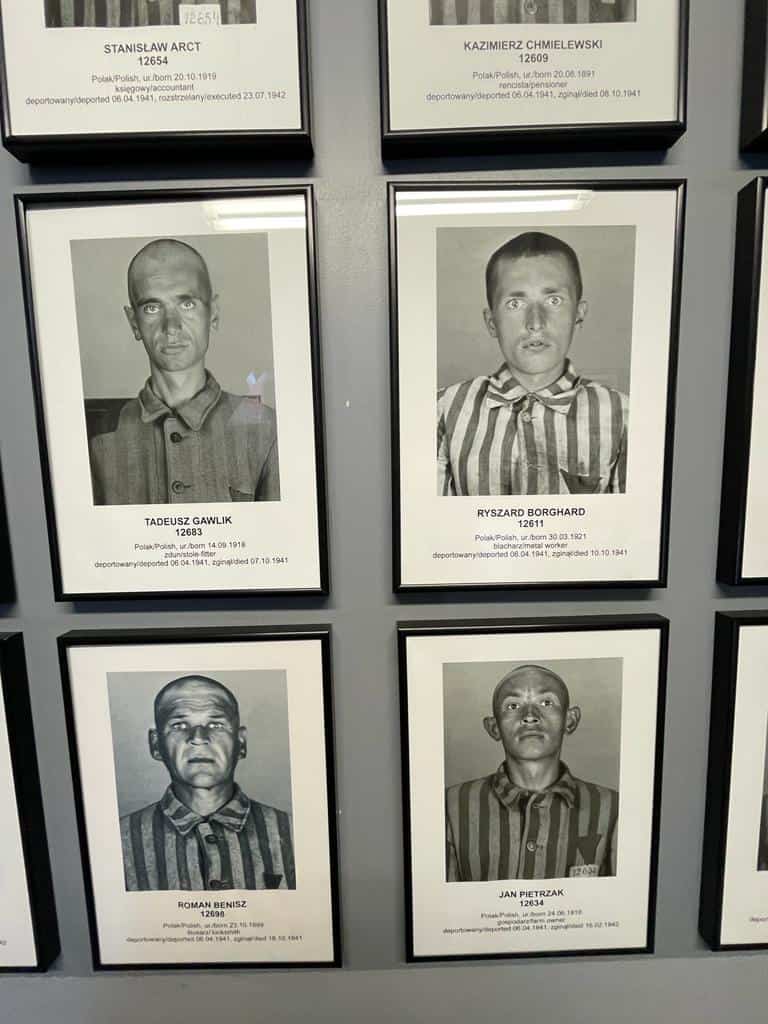
From the Horrors of the Past to the Horrors of the Present
Eventually it was time to head back to Krakow. But the day’s insight into the horrors of humanity did not end at Auschwitz.
Back in Krakow were a group of people draped in the blue and yellow flag of neighbouring Ukraine. They sang songs in the square with placards dotted around them. “Azovstal, save Mariupol defenders” read one. “NATO what are you waiting for” said another.
Poland has a close relationship with Ukraine, whilst being wary of the Russians. Russia has a history of aggressive behaviour on the Eastern flank. Nearby Lithuania, Latvia and Estonia were all invaded within the last century, with Ukraine obviously a far more recent target.
No country has done more to house Ukrainian refugees than Poland. Over 1.5 million have relocated between the two countries since the war expanded in 2022.


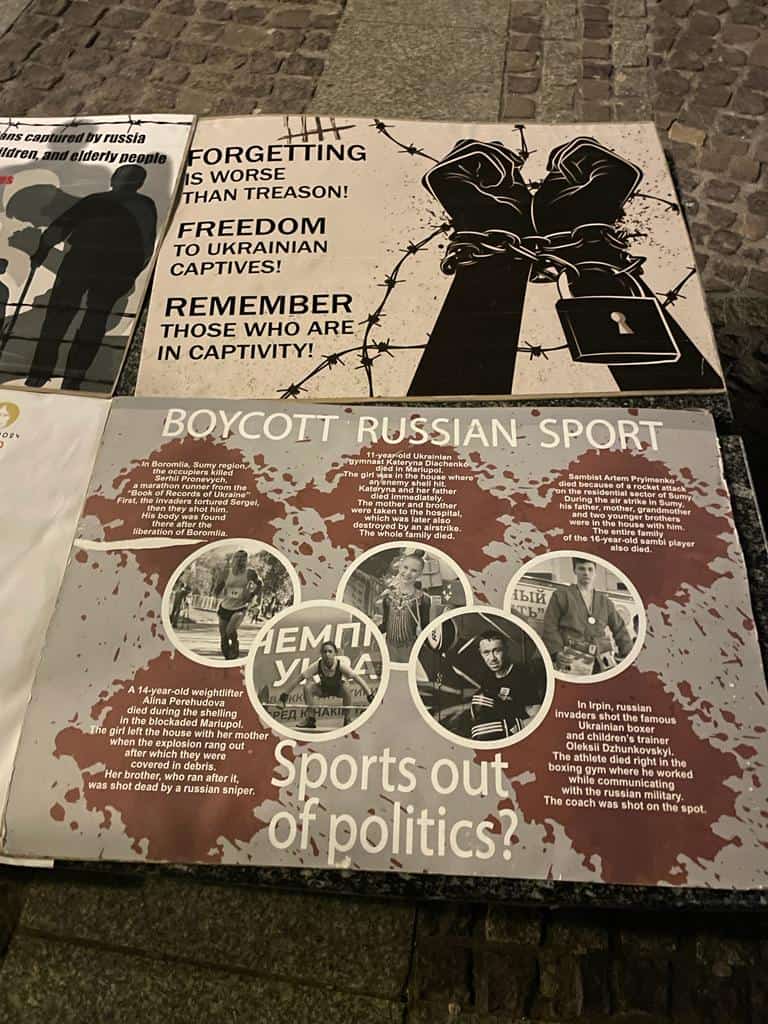
Final Thoughts on Visiting Poland
After Auschwitz, my short time in Poland had come to an end. It was time to head back home and prepare for the next chapter in life.
Ultimately Poland is one country I would have liked to see more of. For starters, I am a massive football fan and would have loved to see some of the country’s famous atmospheres. Not to mention visiting other cities of interest.
The things I did see however made this trip worthwhile. Krakow is a lovely city which perhaps doesn’t receive the credit it deserves. It should be higher up the list of popular European city break stops. And Auschwitz is a must. A trip and an education you will never forget. Although I would suggest paying for the tour with a trained educator rather than taking the free trip as I did. Book well in advance though.
Poland is very safe and the people are kind. If you’re looking for a cheap (from Europe at least) holiday, then you can do a lot worse than Poland.
Please visit the destinations page if you wish to see more stories from my journey to visit every country in the world.
